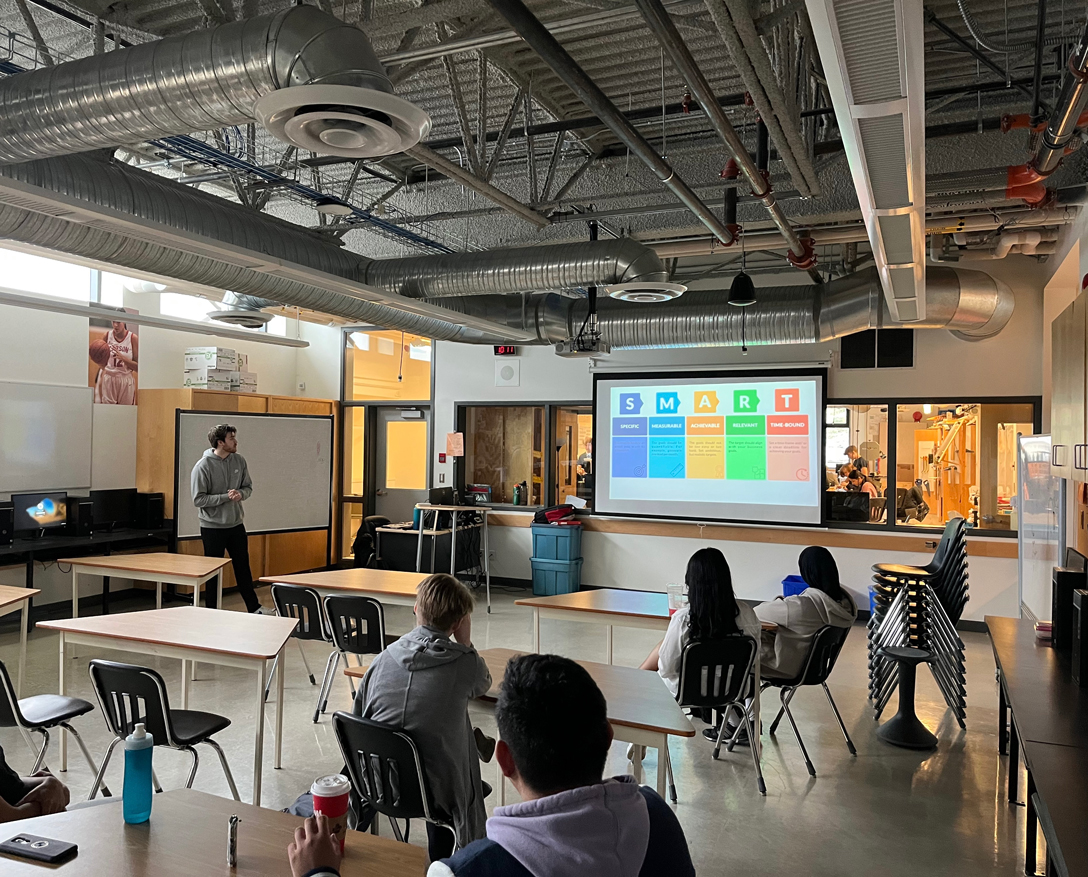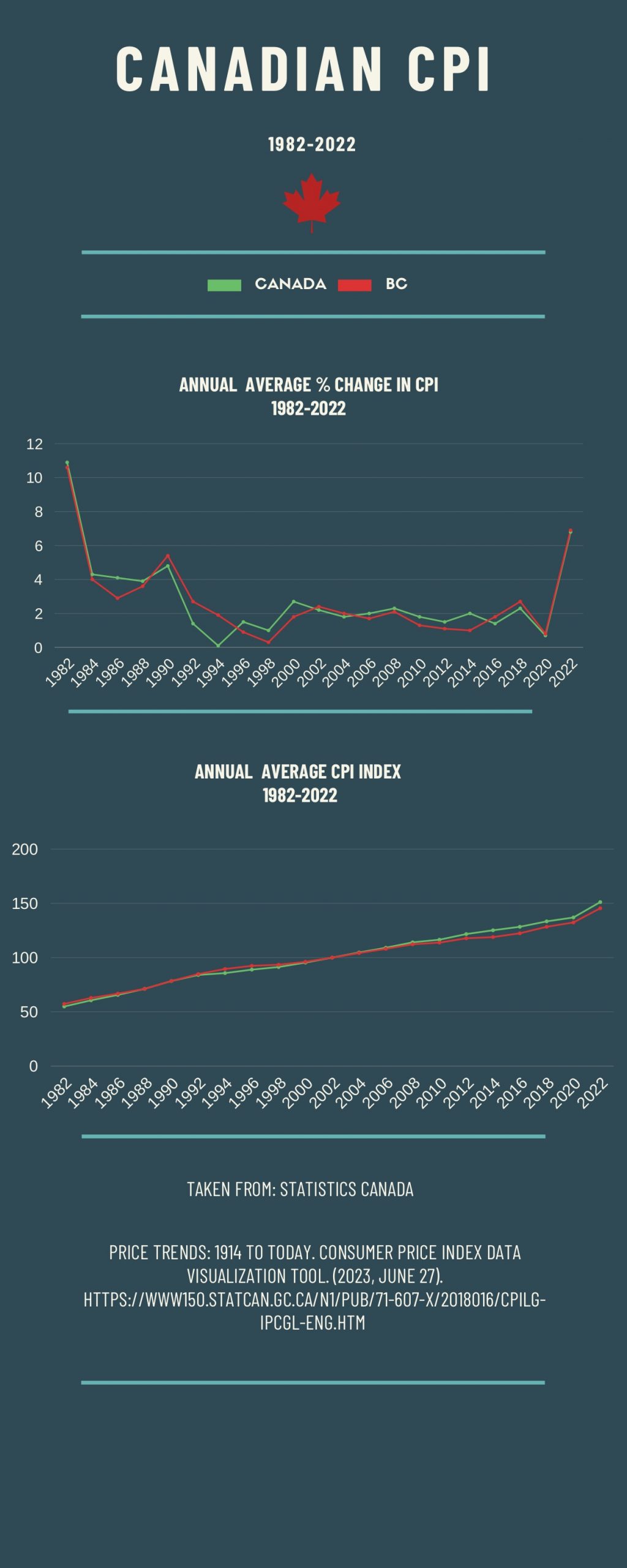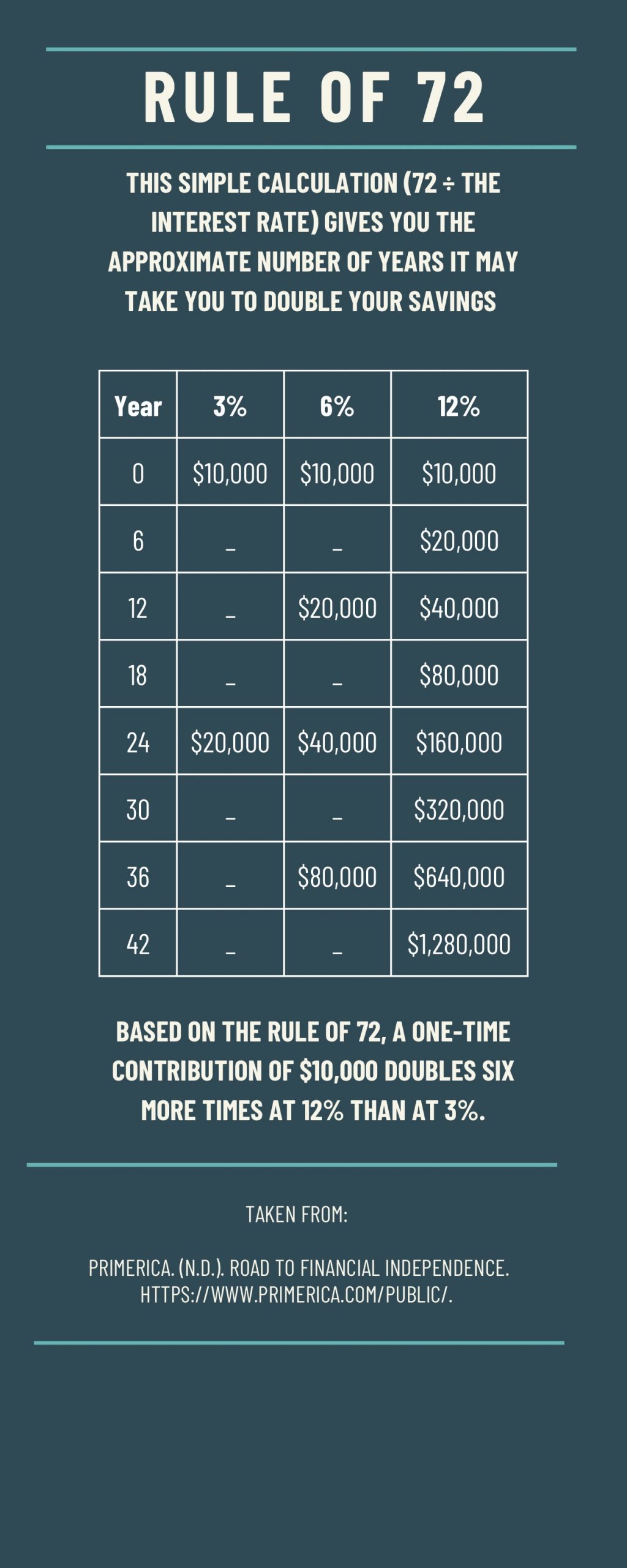
Harrison Archer
Harrison Archer is currently in his last semester of the Bachelor of Business Administration program with a major in marketing. A lifelong athlete and full-time student he has also achieved Capilano’s dean’s list for academic achievement two times. Harrison is the current VP of marketing for Enactus Capilano and was a part of the team that placed top 20 at the Enactus Canada Nationals for Social Impact. He plans on continuing his knowledge of business, marketing, and social entrepreneurship in future endeavors.
Despite Canada’s highly educated population, many citizens still lack the basic tools to help them succeed financially. In Canada, 81% of high school students graduate lacking the basics of financial literacy (Bazian, 2018) (British Columbia Securities Commission, 2011) and 90% of Canadians report having accumulated debt within the past five years (Statistics Canada, 2019). With the price of housing and food being at an all-time high in Canada, it would seem like teaching financial literacy to our youth would be evident. However, for some policymakers such as the British Columbia Ministry of Education (BCMOE), it seems that the fundamentals of savings, taxes, credit, and budgeting should not be a top priority for British Columbia high school students. Perhaps it is because they believe financial literacy is already being taught at a sufficient level, after all, financial literacy is technically being taught in Mathematics 10 in BC (CEMC Waterloo, 2018).
However, what policymakers underestimate is the lack of practical financial skills taught in the BC curriculum. The current curriculum does have a section of Math 10 that prioritizes these financial skills. How to identify different incomes, the differences between renting and leasing different assets, identifying different Canadian deductions, and learning about compound interest rates are the key teachings (CEMC Waterloo, 2018). Unfortunately, many teachers in my local community have said that they don’t even teach that section of the curriculum due to a lack of updated textbooks. Moreover, compound interest rates and Canadian deductions, although necessary components to being financially literate, are complex topics and should not be students’ introduction to financial literacy. Rather, the curriculum should focus on creating a strong financial base and should prioritize skills that will be relevant coming out of high school. This includes but is not limited to familiarity with how to budget and save, how to effectively use credit, and how to manage their taxes and student loans. Furthermore, regardless of what is being taught in Math 10, this should not be the first and the last time students learn about these topics in their educational experience. If students are not properly equipped with the right skills, they can’t make smart and informed decisions. Therefore, the BC curriculum should be required to teach financial literacy at a fundamental level through all grade levels.
Enactus
The discourse on financial literacy is not one of heated debate or controversy and therefore, sometimes may not be a part of the dominant public narrative. One organization that is at the forefront of this conversation is Enactus Capilano, a subset of Enactus Canada, a non-profit organization that focuses on social entrepreneurship. The primary mission of Enactus clubs is to identify a problem in the local community and develop projects aligned with the 17 UN goals to address and solve these issues. Last year, I was fortunate enough to join Enactus Capilano, and more specifically, the Square One team. Square One is a project that focuses on teaching the fundamentals of financial literacy in high schools across the greater Vancouver area. This is done through four comprehensive workshops on budgeting, savings and taxes, banking, and credit. My experiences as a member of the Square One team, and teaching workshops, revealed critical insights that served as the catalyst for my interest in this topic.
In the past year, I’ve had the opportunity to teach over 100 students and speak with a lot of faculty members mostly in the Vancouver area. Based on my time speaking, engaging and surveying these students, it is clear that there is a significant lack of practical financial knowledge being taught in Vancouver. Most of these workshops take place in grade twelve classes, and for a lot of these students, they are only a few months away from moving out and having to pay rent, tuition and more. Despite this, many of them seem unprepared and equipped to manage those financial responsibilities. According to the surveys we conducted with over 150 students in North Vancouver, 80% of the students lack the basics of financial literacy. Our surveys covered topics on different types of interest, budgeting practices, different saving vehicles, and credit card use. Based on this, it was clear that Math 10 was their first and last time learning any practical skills and they were severely under-prepared for the real world.
Recently, Deborah Wakeham, the Vice President of Operations at Junior Achievement BC(JABC), a large financial education-based not-for-profit organization, spoke more on this topic. She mentioned how “It is not enough for students to hear this type of information once in their educational career.” This is a valuable point, as like any other subject, financial literacy must be analyzed, practiced, and repeated for many years for it to be retained and put into practical use.

Budgeting Workshop: Here I am teaching a Square One budgeting workshop at a High School in North Vancouver. I am teaching the students about S.M.A.R.T. goals, a great starting point for students to learn about budgeting.
The BC Context
It is no secret that there are unique challenges that young people in BC face, and high inflation rates, student loans, debt, and housing prices are factors that will prove especially difficult. In 2022, Canada saw the largest increase in the Consumer Price Index (CPI) since 1982 and more recently, BC and Vancouver saw 5% and 4% increases in CPI respectively (Canada Food Price Report, 2022). The CPI is a measurement of the overall inflation based on the prices of goods and services such as food, shelter, and education to name a few (Statistics Canada, 2023). On top of that, coming off the COVID-19 pandemic and other major world crises, Canadians are being faced with extreme price increases in things such as food and gasoline (Canada Food Price Report, 2022). According to Canada’s Food Price Report conducted by Dalhousie University (2022), the typical grocery bill has risen by 70% from 2000 to 2019. Furthermore, data show that while the median income in Canada grew by 6.6% between 2015 and 2019, the national average food expenditure increased by 16.3% and in 2022 the food inflation rate in BC rose to 9.2% (Canada Food Price Report, 2022). This means Canadians have a higher proportion of their income allocated to necessities like food, a trend that has only been exacerbated by COVID-19 and the war in Ukraine (Canada Food Price Report, 2022).

Canadian CPI: This graphic represents the historical changes in the Consumer Price Index in Canada since 1982. This indicates a need for savings and budgeting.
Now, it may seem that these are complex issues that require large institutional and political changes to fix. However, from the perspective of a young person in BC, something as simple as a budget that shows your income, expenses, debts, bills, and transactions can have a significant effect on saving money and can help people stay on top of their finances. This is true for most Canadians as those who budget are less likely to fall behind on financial commitments, they spend less than they make, and they borrow less (Statistics Canada, 2019) For instance, last year, I created a budget using an online tool developed by our Square One team. By diligently tracking my expenses and visualizing my spending habits, I was able to identify areas where I could cut back, allowing me to save money. With these savings, I began monthly investments into a TFSA, a simple and practical skill to have yet it was absent from my education. If it had been, I could have started building a healthy financial future earlier.
Furthermore, with young students, one of their first financial responsibilities coming out of high school will be student loans. According to Statistics Canada, one-quarter of Canadians aged 18-24 plan on having an educational expense in the next three years with the average tuition estimated to be between $20,000 to $29,000(Statistics Canada, 2019). Among Canadians who plan on attending post-secondary in the next 3 years, 40% expect to use borrowing as the means of attending (Statistics Canada, 2019). On top of that, half of Canadians aged 18-24 currently
have student loans (Statistics Canada, 2023). Taking on a student loan is a big financial decision and people need to be well-informed before doing so. Knowing the differences between federal and provincial loans, the current interest rates, eligibility criteria, and their repayment terms are crucial information that every high school kid should be taught in BC.
Furthermore, as previously mentioned, tactics like budgeting can also have a large impact on being able to manage student loans and other expenses while receiving an education. For Canadians under the age of 35, those who budget are 7% less likely to have outstanding student loan payments (Statistics Canada, 2019). As young people face new financial responsibilities related to post-secondary education, addressing these challenges early on before they are faced with them will empower them to navigate these difficulties and foster a more opportunist future.
This mentality is especially important for young people when they look to tackle the ever-looming real-estate issue that plagues BC. Erin Robinson, a former Vancity employee and co-developer of the “Each One Teach One” program, discussed how “With the uniquely high real-estate prices in Vancouver, young Canadians need to find new ways to build wealth”. She mentioned how in the past, owning a primary residence was the main source of building wealth for Canadians as it allowed them to borrow, pull equity and rent from the property. However, with the average cost of a detached house in Vancouver being $2.2 million, new methods of building wealth need to be available and promoted (WOWA, 2023). This requires teaching our youth new skills in investments and savings. With Square One, we teach students these foundational skills like the difference between a TFSA and RRSP. Moreover, we teach them the rule of 72 which is a basic calculation (72/interest rate) that shows the approximate amount of years it will take to double your savings. Brent Larson, a BC representative of Primerica, shed some light on the importance of having this knowledge early on in life. He explained how the average inflation rate over the last few decades has been 3.5%, therefore, to just “Tread Water” people need to be saving every year with an equal rate of return. To put this into perspective, the average rate of return for a basic savings bank account is around 1.5% (Insurance Portal, 2021)(Primerica, 2021).

Rule of 72: This graphic explains the rule of 72, a calculation that is used to calculate the number of years it will take to double your investment savings at different rates of return. This calculation is used by the Square One team at Enactus Capilano during savings workshops.
Furthermore, in 2021, a survey showed that 63% of Canadians had put zero dollars aside for savings in the past year (Insurance Portal, 2021). Hopefully, this will not be the case for this new generation of Canadians, however, to ensure this, it is pertinent that the idea of savings starts early in people’s lives, and they are made aware of the different vehicles that are available.
The best part is, for most people, setting aside a small portion of money is a very realistic goal; they just need to be given the knowledge to do it.
Responsible credit card use is another foundational skill that young people are missing. There seem to be two main issues regarding young Canadians and credit. On one hand, for some people, there seems to be a certain stigma, fear and aversion towards credit cards. This may be a result of weariness and bad experiences with credit that had been passed down from parents. Now, to a certain degree, this is an understandable fear as credit card debt is a reality for a lot of Canadians as the average non-mortgage debt for Canadians has reached an all-time high in 2023 at $21,131(The Canadian Press, 2023). This has been made worse by a reduced number of young Canadians putting aside money which has increased reliance on credit for day-to-day spending (Statistics Canada, 2019).
However, although credit cards can be dangerous, it is not something that should be feared, instead, they should be taught at a young age so that people can understand how to use them advantageously. Robinson mentioned how “For young Canadians, there needs to be a demystification of credit cards.” A credit card can be very useful and advantageous for people and is a necessity in today’s society to buy a house, or car, or apply for a job. Following the model, we use in our workshops at Square One, the curriculum should teach the students exactly how credit cards work in terms of what interest rates are, credit limits and ratings, credit checks as well and the positive outcomes of using a credit card responsibly.
On the other hand, some people have no fear of credit cards and use them without understanding the negative repercussions. Nelson Soh, a CPA, financial consultant and TEDx speaker on financial literacy mentioned how “This generation has such easy access to credit with the numerous availabilities of online banking tools”. Additionally, in my own experience, local businesses and certain academic institutions are constantly taking every opportunity to try to promote and sell credit cards to young people. Without the proper education, it can be very easy for people to rely on. Recently, a 23-year-old student at Capilano University shared with me his experiences with credit, his lack of financial education and the resulting consequences he has faced. During our conversation, he mentioned how in his formative years he received little to no financial literacy education at school or in his household. In the following years after his graduation from high school in 2018, he made a series of poor financial decisions that included opening six credit cards with varying limits. He was spending on these cards much more than he was making and rarely even paying the minimum balance. This resulted in him currently having
a credit score of 540 and being $50,000 in credit card debt. Regardless of what category people fall into, both challenges are a result of a lack of education on this topic. Credit is not something that should be feared, and it should not be something that is taken lightly. Rather, the fundamentals should be ingrained into students before they graduate, so that we can avoid creating these hopeless stories that we so often hear of.

Interview: My interview with Nelson Soh, a financial literacy expert and financial consultant with FSQ Consulting. Nelson and I chat about financial literacy, why it is so vital in our communities, and his experience doing a TEDx talk “Financial Literacy and the Social Media Generation”.
Barriers
One point of contention that arises with this topic is that many people argue that teaching financial literacy to kids should fall under the responsibility of the parents. Although an understandable consideration, that theory assumes that everyone is fortunate enough to have financially educated parents. For many, there are limitations in what can be learned and accessed at home which can oftentimes be the case for children of immigrants. Robinson mentioned how, “Financial literacy is a language of its own, and it can be very hard for newcomers to learn a new language as well as the intricacies of the Canadian financial system.” This is backed by research that shows 34 to 46 percent of newcomers in Canada experience financial vulnerability while navigating Canadian institutions (SEDI, 2008) and low language skill is cited to be a major barrier to accessing financial services (Prosper Canada, 2015). Of the over one million immigrants living in the metro Vancouver area, 49.5% speak a non-official Canadian language (Prosper Canada, 2015). Furthermore, there is also the consideration that many immigrants may be coming from countries where people may not have the same trust in their banking institutions (Prosper Canada, 2015). During one of my workshops last year, I spoke with a teacher whose husband was from Indonesia. She discussed her husband’s aversion to the Canadian banking institutions as he refused to get credit and refused to put his money in the bank, rather, he kept his money in cash. This came from a fear of economic collapse and subsequent loss of money which had happened in his home country.
People from diverse and lower socio-economic backgrounds may also be limited in what they can access on their own (Matheson et al, 2020). According to a study by Queen’s University that looked at the Perceptions of financial literacy in Ontario High schools, among respondents, they found that there were knowledge gaps between kids who were exposed to financial literacy at home, and those who weren’t (Matheson et al, 2020). Moreover, they mention how “Students who experience poverty have been found to perform worse than their peers from higher-income
households on measures of financial literacy knowledge” (Matheson et al, 2020). Furthermore, individuals who come from lower socioeconomic areas are more susceptible to predatory payday loans which have been shown to be located specifically in areas of low economic prosperity (Levykh, 2023). Vancouver is no exception, notice that you will never find a payday loan institution in West Vancouver or Kerrisdale but rather in the Downtown Eastside where it is easier to get trapped into dangerous cycles of borrowing (Levykh, 2023). Now, many other complex factors contribute to challenges like poverty and food insecurity that can force people to resort to cyclical borrowing. However, integrating standardized financial literacy courses can bridge the knowledge gaps created by the above-mentioned challenges and create a more equitable society for all.

Payday Loans: A cash advance business located in North Vancouver. This is one of the only payday loan institutions on the North Shore and is located in a busy and highly dense area.
Additional concern around liability issues also comes up as a point of dispute in this discussion. From the perspective of the BC Ministry of Education, they may believe that teachers could assume some level of legal liability if they were to offer unwise financial advice to a student. However, this can be easily mitigated through oversight from the Ministry of Education. Like any new course that is brought into the curriculum, the information must undergo a significant amount of review before it is approved. Many places that already have financial literacy courses utilize financial institutions, nonprofits and more to ensure financial information is up-to-date, accurate and useful. The program will be peer reviewed by financial experts and the teachers can be adequately trained to follow the new material in the curriculum. Therefore, the likelihood of a trained teacher offering unwise financial advice to one of their students is very low. Ensuring a teacher follows a set and approved curriculum that teaches financial basics is a much better option than a parent offering negative financial advice or none at all.
Where is Financial Literacy Working?
Now, usually, to undergo a large shift in policy or curriculum there must be a precedent. Recently, the efficacy of financial literacy programs has been on display in other regions and countries and although the data is relatively new, it has shown to have a positive effect. Most notably, the superintendent of education in California, Tony Thurmond, has recently introduced a bill that would make personal finance courses a high school graduation requirement (California Department of Education, 2023). Furthermore, schools in California like Berkeley High School already have robust personal finance courses that have been shown to significantly improve their
students’ confidence to make informed financial decisions (California Department of Education, 2023). This Bill is accompanied by a $1.4 Million teacher development fund that will be used by California High school teachers to receive professional development training in financial literacy courtesy of Next Gen Personal Finance (NGPF) a non-profit organization (California Department of Education, 2023). This bill was introduced based on research done by the Education Department of California that showed, “Students who have access to high-quality financial education have better financial outcomes as adults that result in less debt and a higher quality of life” (California Department of Education, 2023). This Bill, fund and partnership with NGPF sets a great precedent for how a better financial literacy program could be integrated into BC and the steps that it will take to do so. Various non-profit organizations such as JABC, Prosper Canada and Enactus Canada would be great resources for the BC Ministry of Education to utilize to conduct educator training and create competent programs.
Additionally, there has also been some great data that has come out of Northern Europe in recent years. In 2015, Denmark added compulsory financial literacy to their national curriculum (OECD, 2023). As part of primary school education in the 7th-9th grade, students learn about budgeting, savings and comparing different types of loans (OECD, 2023). This has resulted in some great financial literacy rates among Danish youth (Danske Bank, 2022).
The three most financially literate countries in the world are Denmark, Sweden, and Norway with 71% of their populations being considered financially literate (University of Illinois System’s Student Money Management Center, 2022). Furthermore, a survey was conducted by YouGov, an international market research company, and it showed that of the top three countries, Denmark was the top performer when it came to financial literacy rates among youth aged 12-17(Danske Bank, 2022). Young Danes are going into adulthood more prepared and this is clear as Denmark has the third lowest percentage of youth who are at risk of poverty in the European Union (Eurostat, 2022). Based on the data we see from Denmark and other Nordic countries we can infer that financial literacy programs are proving to be effective and have profound significance in the well-being of its citizens.
Conclusion
I have been in the classrooms with students from my local community, spoken to experts in the field and I have heard the stories of my peers and it is clear that more financial education is
needed in our communities. The responsibilities that people face in early adulthood and beyond can be very intimidating and difficult to navigate. In the best-case scenario, we equip students from an early age with the necessary financial skills to manage these responsibilities and succeed financially. However, the reality is that kids are being sent off into adulthood with no real practical skills and are struggling with their financial well-being. We know that there is economic uncertainty in BC and limits to what people have access to. Therefore, to ensure that everyone is given the best chance at life, gaps in what is accessible must be filled and opportunities must be offered. Being able to afford a house is an uncertainty for many young Canadians, dealing with student loans is a reality for most, and credit cards are something that will always be a part of people’s lives. It is inevitable and natural that people will struggle with these things, however, teaching financial literacy will give people the best chance towards a better future.
References
British Columbia Securities Commission. (n.d.). Public Opinion Research: National Report Card on Youth Financial Literacy. Investright.org. https://www.investright.org/wp-content/uploads/2016/09/National_Youth_Survey_Executive_Summary_English-25-10-11.pdf
Canada, F. C. A. of. (2023, January 31). Government of Canada. Canadians and their Money: Key Findings from the 2019 Canadian Financial Capability Survey – Canada.ca. https://www.canada.ca/en/financial-consumer-agency/programs/research/canadian-financial-capability-survey-2019.html#:~:text=Results%20from%20the%202019%20survey,they%20have%20too%20much%20debt.
CANADA’S FOOD PRICE REPORT 12TH EDITION 2022. (n.d.-a). https://cdn.dal.ca/content/dam/dalhousie/pdf/sites/agri-food/Report%20EN%20Gardening.pdf
Canada’s food price report 2023- Dalhousie University. (n.d.-b). https://cdn.dal.ca/content/dam/dalhousie/pdf/sites/agri-food/Can
CBC/Radio Canada. (2022, November 30). Economic pressures + mandatory financial literacy in school = Better Preparation for the real world | CBC news. CBCnews. https://www.cbc.ca/news/business/financial-literacy-high-school-1.6668510#:~:text=Financial%20education%20evolving&text=Frequently%20taught%20in%20math%2C%20financial,wellness%20classes%20in%20some%20provinces
Children at risk of poverty or social exclusion-2022. File:Children-at-risk- of-poverty-or-social-exclusion-2022.jpg – Statistics Explained. (n.d.). https://ec.europa.eu/eurostat/statistics-explained/index.php?title=File%3AChildren-at-risk-_of-poverty-or-social-exclusion-2022.jpg
Denmark’s youth top scorer when it comes to financial responsibility. English. (n.d.). https://danskebank.com/news-and-insights/news-archive/news/2022/22092022
Financial Literacy and newcomers to Canada – Prosper Canada. (n.d.-c). https://prospercanada.org/getattachment/3ff26769-c2d4-4d9e-82e9-f56467e4eb31/Financial-Literacy-and-Newcomers-to-Canada.aspx
Financial Literacy Education in Schools. ontario.ca. (n.d.). https://www.ontario.ca/page/financial-literacy-education-schools
Financial Literacy in Canada lack of skills and education contributing to surging consumer debt. MNPDebt.ca. (n.d.). https://mnpdebt.ca/en/resources/mnp-debt-blog/financial-literacy-in-canada-lack-of-skills-and-education-contributing-to-surging-consumer-debt
Foundations and pre-calculus 10 – University of Waterloo. (n.d.-d). https://www.cemc.uwaterloo.ca/resources/courseware/curriculum-maps/BC-Grade10-Mathematics10-to-CEMC.pdf
Government of Canada, S. C. (2023, February 13). One in four Canadians are unable to cover an unexpected expense of $500. The Daily – . https://www150.statcan.gc.ca/n1/daily-quotidien/230213/dq230213b-eng.htm
Government of Canada, S. C. (2023, September 8). Consumer price index: Frequently asked questions. Government of Canada, Statistics Canada. https://www.statcan.gc.ca/en/subjects-start/prices_and_price_indexes/consumer_price_indexes/faq#:~:text=The%20Consumer%20Price%20Index%20is,the%2012%2Dmonth%20%25%20change.
Levykh, A., Deveau, D., Jackson, L., Lajartre, M. de, About the Author Anya Levykh Anya Levykh is a Vancouver-based editor, Jones, S. N., & Craig-Bourdin, M. (n.d.). “the budget has shone a light on the alternative lending problem.” CPA Canada. https://www.cpacanada.ca/en/news/canada/budget-targets-predatory-
lending#:~:text=The%20biggest%20problem%20is%20that,the%20usual%20two%2Dweek%20period.
Press, T. C. (2023, September 14). Credit card debt hit all-time high in Q2 as financial pressure builds: Equifax. CTVNews. https://www.ctvnews.ca/business/credit-card-debt-hit-all-time-high-in-q2-as-financial-pressure-builds-equifax-1.6560929
Price trends: 1914 to today. Consumer Price Index Data Visualization Tool. (2023, June 27). https://www150.statcan.gc.ca/n1/pub/71-607-x/2018016/cpilg-ipcgl-eng.htm
Primerica. (n.d.). Road to Financial Independence. https://www.primerica.com/public/.
Services, M. of C. (2023, October 17). Consumer price index (CPI). Province of British Columbia. https://www2.gov.bc.ca/gov/content/data/statistics/economy/consumer-price-index
Staff, T. I. (2021, June 22). Canadians concerned about not having enough money to retire. Insurance Portal. https://insurance-portal.ca/society/canadians-concerned-about-not-having-enough-money-to-retire/
State superintendent Tony Thurmond visits Personal Finance class and addresses benefits of financial literacy for students. SPI Addresses Student Financial Literacy Benefits – Year 2023 (CA Dept of Education). (n.d.). https://www.cde.ca.gov/nr/ne/yr23/yr23rel22.asp#:~:text=Only%2027%20percent%20of%20California,to%20improve%20their%20lives%20overall.%E2%80%9D
Week, G. M. (n.d.). 2023 Denmark Global Money week. Denmark. https://globalmoneyweek.org/countries/155-denmark.html#:~:text=Since%202015%2C%20financial%20education%20has,(aged%2013%2D15)
Personal Interviews were conducted with the following
Nelson Soh: FSQ Consulting
Erin Robinson: Capilano University
Deborah Wakeham: Junior Achievement British Columbia
Brent Larson: Primerica
